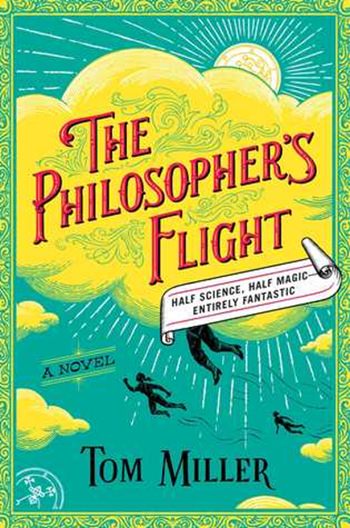
Rarely does a novel begin with rollicking fierceness that grabs readers from its opening lines and doesn’t loosen its grip or lessen its hold all the way through.
 “The Philosopher’s Flight” is the debut novel from Tom Miller, an emergency room doctor from Madison, Wisconsin, and he’s woven a fanciful tale set against the historic backdrop of post-World War I America.
“The Philosopher’s Flight” is the debut novel from Tom Miller, an emergency room doctor from Madison, Wisconsin, and he’s woven a fanciful tale set against the historic backdrop of post-World War I America.
In the book’s prologue, narrator Robert Weekes introduces empirical philosophy or sigilry — the movement of energy to produce a physical affect. Practitioners draw sigils or glyphs on various surfaces to choose the resulting action. The science/art came into widespread use in the 1750s and, by the novel’s opening in 1917, it’s used for everything from hovering and flying hundreds of miles to preventing pregnancy, healing injuries — and even, to murder.
Not surprisingly, philosophers have become much sought after in wartime. They’re even credited with ending the American Civil War.
Women excel at the practice, so naysayers dismiss it as witchcraft and an organized movement seeks to destroy it and send women back into the home rather than watch them rise through the military and academic ranks.
Male sigilrists are rare, but that doesn’t dash Weekes’ hopes of joining the same elite corps that his mother once led. When he receives a prodigious scholarship to Radcliffe College, then primarily for women, Weekes leaves his rural Montana town and heads to Boston where his formal studies begin as well as his eye-opening introduction to the larger world and its politics and social norms.
Miller’s writing is intoxicating and one doesn’t need to be a fantasy or sci-fi fan to adore this book. One only hopes Miller can manage to take a break from doctoring to write another book and another and another.





